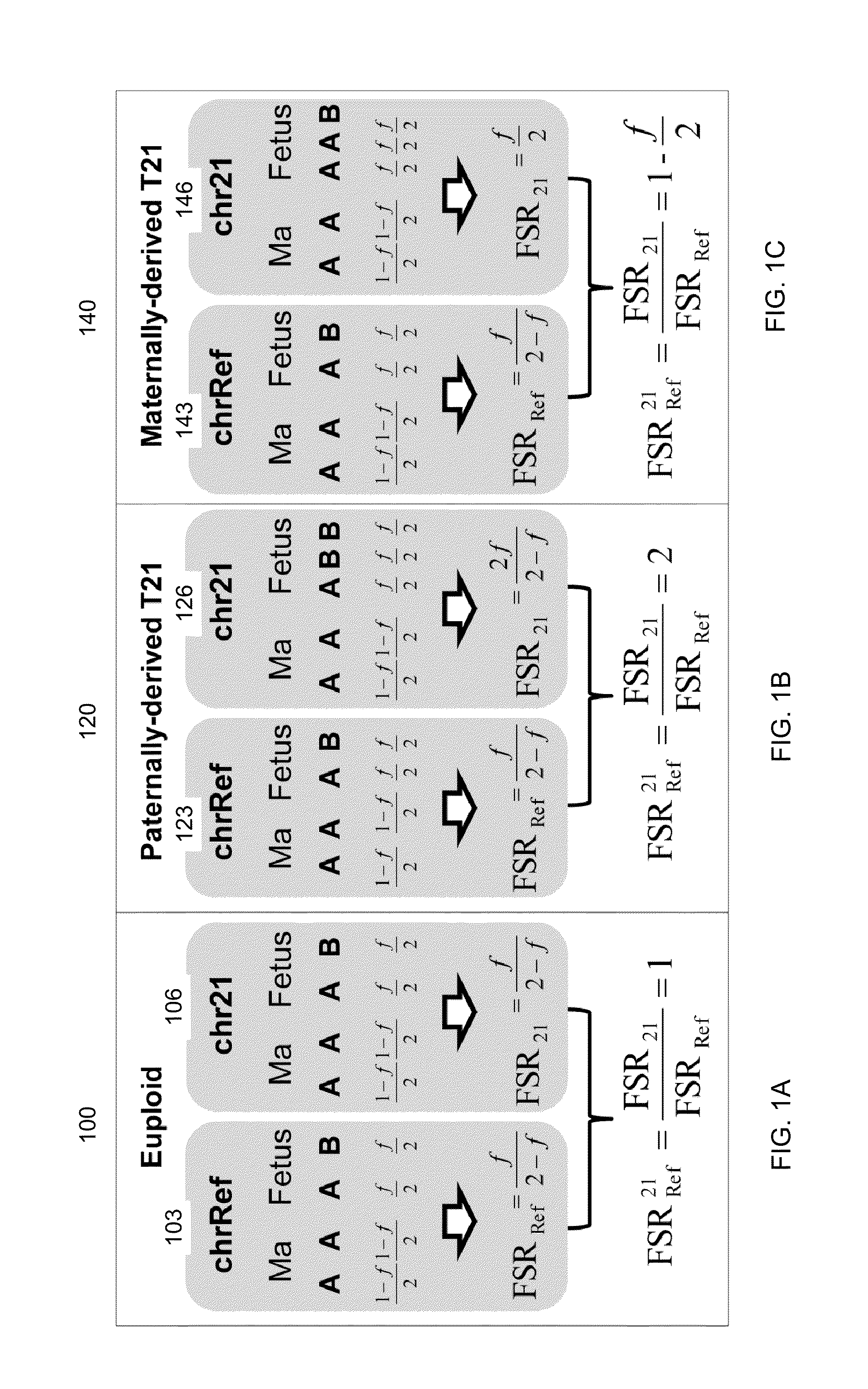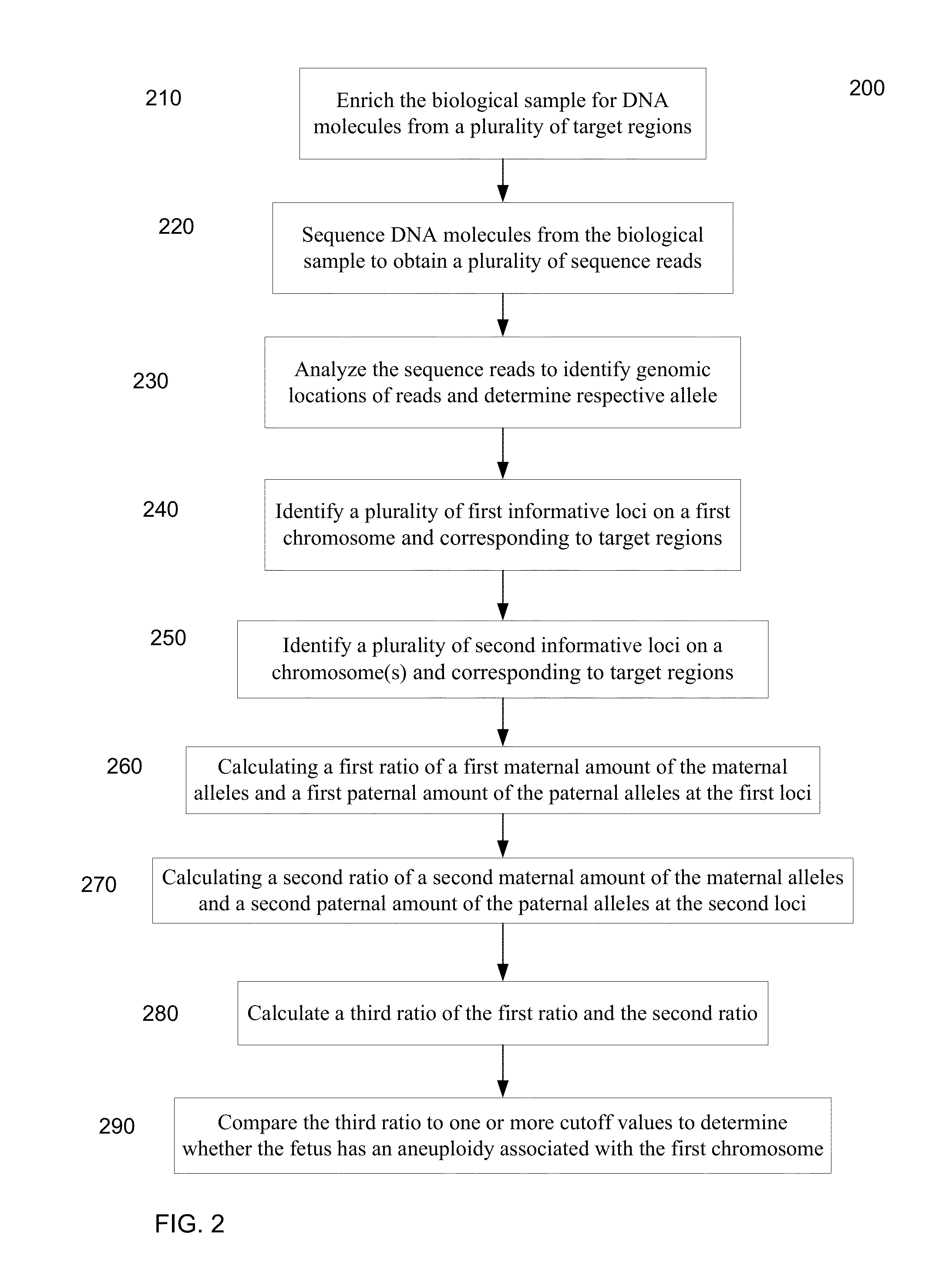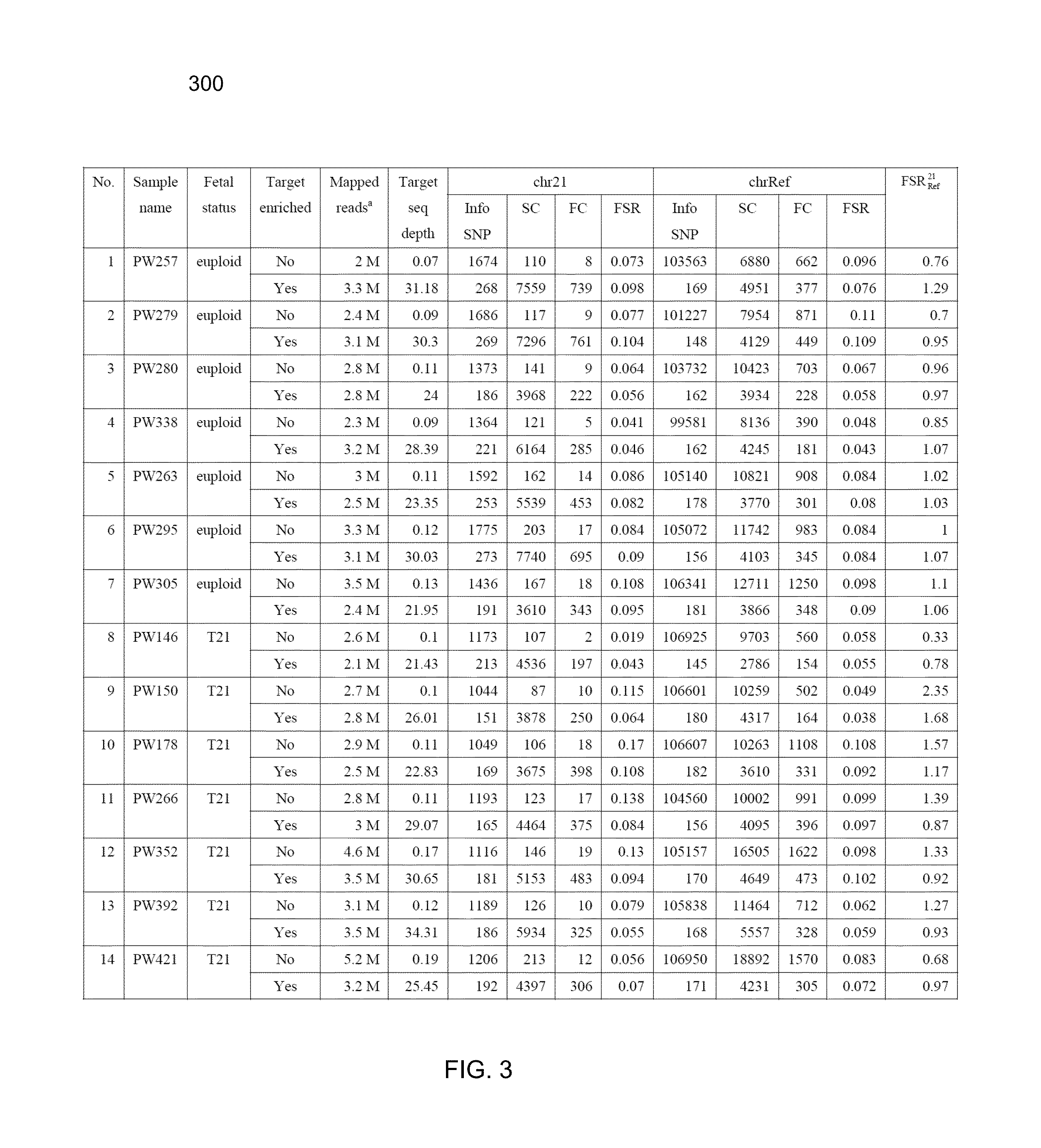Noninvasive prenatal diagnosis of fetal trisomy by allelic ratio analysis using targeted massively parallel sequencing
a technology of allelic ratio analysis and mass sequencing, applied in the field of non-invasive prenatal diagnosis of fetal trisomy by allelic ratio analysis using targeted mass sequencing, can solve the problems of controversies over the effectiveness of formaldehyde treatment, small but definite risk of miscarriage, and unclear clinical applicability of such a method
- Summary
- Abstract
- Description
- Claims
- Application Information
AI Technical Summary
Benefits of technology
Problems solved by technology
Method used
Image
Examples
Embodiment Construction
[0027]Plasma DNA obtained from a pregnant woman contains a mixture of cell-free maternal and cell-free fetal DNA. The fetal DNA proportion in maternal plasma is relatively consistent as determined using polymorphic genetic markers across different chromosomes in euploid pregnancies. For example, the proportion of counts of a first fetal-specific allele at a first locus is relatively consistent with the proportion counts of a second fetal-specific allele at any other locus. The fetal DNA proportion may differ from one maternal sample to another, but the fetal DNA proportion for different polymorphic genetic markers (on the same chromosome or different chromosomes) is relatively consistent within the sample.
[0028]For aneuploid pregnancies, the observed fetal DNA proportion measured using polymorphic genetic markers for the aneuploid chromosome would be perturbed. Embodiments use polymorphisms (e.g., single nucleotide polymorphisms) with fetus-specific alleles to detect such perturbati...
PUM
| Property | Measurement | Unit |
|---|---|---|
| concentration | aaaaa | aaaaa |
| concentrations | aaaaa | aaaaa |
| length | aaaaa | aaaaa |
Abstract
Description
Claims
Application Information
 Login to View More
Login to View More - R&D
- Intellectual Property
- Life Sciences
- Materials
- Tech Scout
- Unparalleled Data Quality
- Higher Quality Content
- 60% Fewer Hallucinations
Browse by: Latest US Patents, China's latest patents, Technical Efficacy Thesaurus, Application Domain, Technology Topic, Popular Technical Reports.
© 2025 PatSnap. All rights reserved.Legal|Privacy policy|Modern Slavery Act Transparency Statement|Sitemap|About US| Contact US: help@patsnap.com



